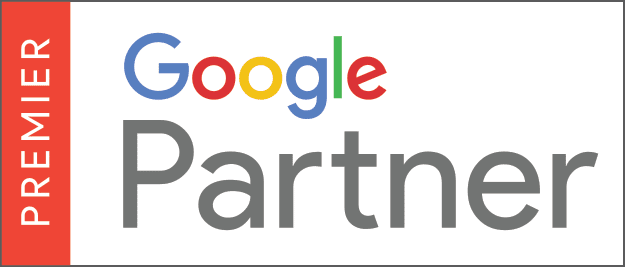- About
- What We Do
-
-
-
Marketing Services
-
-
-
-
-
-
-
THE LEADER IN HOME SERVICES MARKETING Let’s Talk
-
-
-
-
- Who We Work With
-
-
-
Industries
Partnering With Local Businesses In the Trades
-
-
-
-
-
-
-
THE LEADER IN HOME SERVICES MARKETING Let’s Talk
-
-
-
- Case Studies
- Blog
- Resources
- Contact

Pay Per Click (PPC) Terms & Definitions
If you’re confused by all the terms and acronyms associated with Pay Per Click (PPC) advertising, you’ve come to the right place! The PPC experts at Blue Corona have assembled these FREE resources to help you better understand how PPC advertising works so that you can make more intelligent decisions!
One of the best ways to increase your website traffic, leads and sales is Pay Per Click (PPC) Advertising. Unlike other search engine marketing strategies like SEO, the impact of PPC is almost immediate and the rules governing what you can and can’t do are well defined by Google and Microsoft (the two major players – Microsoft powers Yahoo’s PPC ads!).
One of the challenges of PPC advertising – for small business owners and marketing executives alike – is keeping up with all the new lingo. The PPC experts at Blue Corona have assembled this definitions list in order to help you better understand the lay of the land so that you can make more intelligent decisions.
Pay Per Click Acronyms and Terms Defined
Term
Marketing Definition
PPC
Pay Per Click – Advertisers (you) bid on keywords and pay a fee every time an ad is clicked by a searcher.
Impressions
Impressions
CTR
Clickthrough Rate – AKA: click thru rate, click through rate, etc. Clickthrough Rate is a measure of PPC performance determined by dividing the number of clicks received by the number of impressions received. Clickthrough Rate is tied to keywords and PPC ads. For example, if someone searches for “Maryland HVAC companies” and they see an ad titled, “New York HVAC Companies”, it is highly unlikely that they will click the (seemingly) irrelevant ad. The PPC advertiser displaying the NY ad for a MD search is going to have a very low CTR associated with their ad (because the ad is receiving impressions, but it is not attracting clicks). CTR is also used to determine a keywords Quality Score. By having high CTRs and Quality Scores, a PPC advertiser can achieve a higher ad position at a lower cost.
Quality Score
Quality Score – There is a stereotype that PPC ads are often irrelevant or guide visitors to websites not matching their original search query. Google wants more click (clicks equal money for GOOG), but they know that if they drive people to click irrelevant ads, searchers may go elsewhere to find what they need online. Quality Score works as an incentive and a penalty. It rewards the PPC advertiser that: bids on relevant terms, creates ads closely related to their keywords and creates landing pages (or the web page that follows the PPC ad) closely related to both the keyword and the ad. Quality Score punishes PPC advertisers that bid on terms not related to their business and/or those advertisers too lazy to create highly targeted ads and website landing pages.
Conversion
Conversion – A Conversion refers to any action a PPC advertiser deems more valuable than someone that simply visits their website, does nothing and then leaves. Conversions are often referred to as “Goals.” If the goal of your PPC campaign is to generate leads then actions such as visitors completing a web form on your PPC campaign landing page should be identified as a Conversion. Google has special Conversion Codes that can be added to your website and campaign landing pages to track when a Conversion has occurred. You can also track Conversion in the website tracking tool of your choice – for example, Google Analytics.
Conversion Rate
Conversion Rate – A measure of PPC campaign performance. It can evaluated at the keyword, ad or landing page level. It is calculated by dividing the number of Conversions by the number of Clicks (associated with a keyword, an ad or a landing page).
Ad Position
Ad Position – Where your ad displays on a search results page. There are roughly 10 paid ads per search results page. Position “1” refers to the top position on the first page of search results (page 1). Generally speaking, your ad position is determined by two things – your bid (how much you are willing to pay per click) and your quality score (how relevant your ad and website landing page are vs. the bid keyword – more relevence equals a higher quality score and higher ad positions at a lower cost per click).
ROAS
Return on Ad Spend – Related to ROI, ROAS is the revenue generated per dollar spent. ROAS can be a useful metric when you want to compare the performance of two different advertising strategies. Cost per lead can be misleading. Suppose one Yellow Page ad has a cost per lead of $90 and the other has a cost per lead of $50, but the YP ad with the $90 cost per lead generates $700 jobs while the ad with the $50 cost per lead generates $300 jobs. Alternatively, what if one advertising strategy generates leads that convert to sales at a much higher rate? In both of these cases, calculating the ROAS would be helpful for determining which ad is actually more effective..
Ad Extensions
Ad Extensions are like ‘add ons’ to your standard PPC text ad. They provide additional information (and revenue opportunities for Google) such as your company address, phone number, more page links, product images and even email newsletter sign up boxes. Ad extensions are another way to customize your PPC strategy based on the nature of your business – i.e. a retailer probably wants to include their address in their PPC ad while an emergency plumber would be better served including their phone number in the ad.
Geofencing
Geofencing is targeting a specific geographic area and serving ads or alerts to only people physically located in the area. Often, you will see this with advertisements in apps on your smartphone when you enter a certain area (like a certain neighborhood or local attraction). The smallest location you can target in AdWords is a one-mile radius.
Looking for something else? Got a marketing term you need defined or explained? Contact us with your questions – We dare you to stump us!
The information on this website is for informational purposes only; it is deemed accurate but not guaranteed. It does not constitute professional advice. All information is subject to change at any time without notice. Contact us for complete details.

Ready to increase your online presence today with digital marketing?










